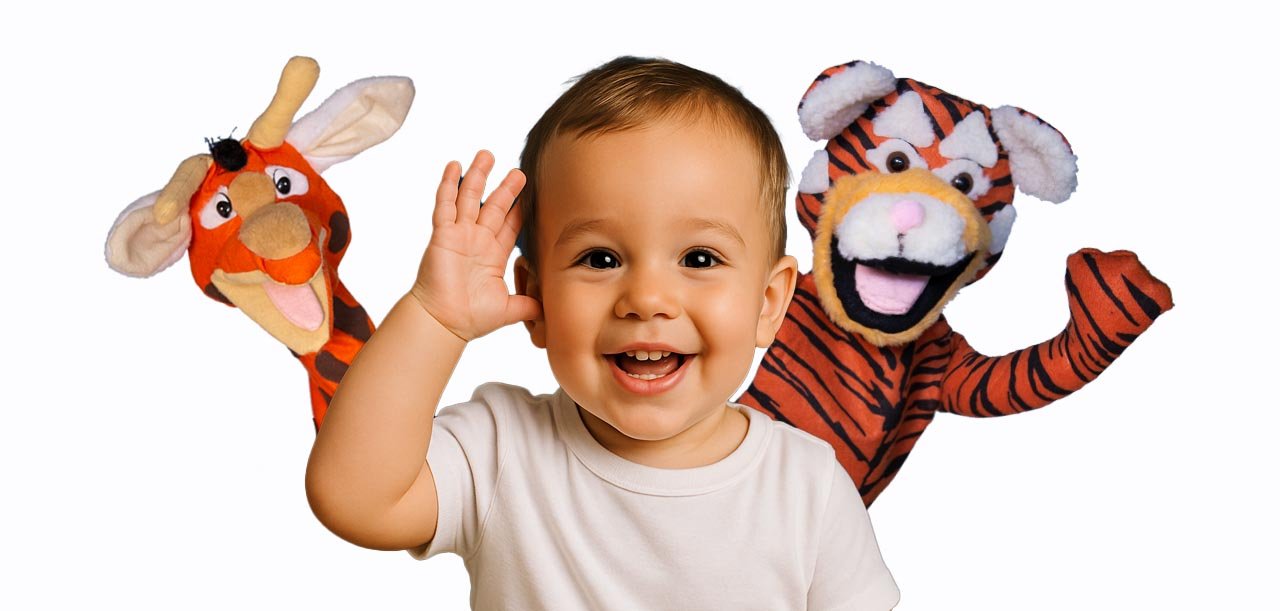
Motor Skill Development with
American Sign Language
The Little Leaders Fundy Pak
Learn over 25 signs in American Sign Language with the Little Leaders Fundy Pak! This fundamental set of signs are a fun and engaging way to spend time with your little one while helping to develop motor skills and increase early childhood communication!
Start your Sign Language adventure today with these three modules: Food & Snacks, How I Feel, and Special Things.
Click A Module Below and Start Learning Sign Language Today!
Kids love to eat! It's even more fun when they can communicate being hungry, thirsty or simply wanting a snack! In this module, learn the following signs:
Juice, Drink, Milk, Water, Snacks, Cheese, Crackers, Eat
Nothing is more frustrating for a young child than not being able to communicate important feelings. In this module, learn the following signs:
Tired, Hungry, Hurt, Wet, Cold, Hot, Happy, Sad, More, Thirsty
Your child grows up fast, so don't miss out on all the special things during this exciting developmental stage. In this module, learn the following signs:
Binky, Hugs, Kisses, Toys, Love, Please, Thank You, Daddy, Mommy
Why Sign Language?
With so many media options and activities available for spending time with little ones, what is the benefit of teaching sign language to children, and is there a benefit to the adults as well?
-
Using sign language encourages toddlers to move their fingers, hands, and arms with purpose, which strengthens their fine motor skills. These small, precise movements help build muscle control and hand-eye coordination—abilities that are essential for future tasks like writing, buttoning clothes, or using utensils. Signing regularly gives toddlers a fun and functional way to practice movement, often without even realizing they’re developing physical skills. It’s a natural, engaging way to lay the foundation for important developmental milestones while also enhancing communication.
-
Sign language gives toddlers a way to communicate months before they can speak clearly. By teaching simple signs like “more,” “milk,” or “thirsty,” children can express their needs and feelings using their hands. This early communication helps reduce frustration, creates a stronger bond between child and caregiver, and fosters a sense of independence in young learners. Signing doesn’t replace spoken language—it enhances it. Many children who learn sign language early often start talking sooner and have larger vocabularies by age two.
-
One of the most common reasons toddlers act out is because they struggle to express themselves. Teaching sign language provides them with a powerful tool to communicate basic wants and emotions before their verbal skills catch up. When a child can sign “tired,” “hungry,” or “hurt,” caregivers can respond more quickly and accurately. This reduces confusion, helps avoid meltdowns, and makes daily routines smoother and more enjoyable for everyone involved.
-
Learning sign language is not only about communication—it’s also a brain-building activity. Signing supports cognitive development by engaging memory, attention, and visual processing skills. It introduces toddlers to the concept of symbols, helping them understand that gestures, like words, can represent ideas. This early symbolic understanding is a crucial building block for reading and language learning later on. Studies show that babies exposed to sign language often perform better in areas like problem-solving and comprehension.
-
Sign language teaches toddlers more than just words—it teaches feelings. By introducing signs like “happy,” “sad,” “scared,” and “help,” children learn to identify and share their emotions in a healthy way. This kind of early emotional literacy builds empathy and strengthens relationships. When children can express how they feel, they’re more likely to feel understood and supported. These are essential skills that help form the foundation for respectful communication and strong social connections throughout life.
FAQs
-
Not at all! In fact, research shows that learning sign language can actually help children develop speech sooner. Signing supports language growth by giving toddlers a way to express themselves before they can speak, which builds confidence and reinforces the connection between words and meaning. Most children transition naturally from signs to spoken words as their verbal abilities catch up. Signing is a bridge to communication—not a barrier.
-
You can start introducing signs as early as 6 months, though many children begin signing back between 8 to 12 months. It’s never too early—or too late—to begin! Some parents start in infancy, while others begin when their child is a toddler and ready to learn more words. The key is consistency and using signs during everyday moments like mealtime, play, and bedtime. Children learn through repetition, so making it part of your routine helps it stick.
-
Not at all! You don’t need to be fluent in American Sign Language to start signing with your child. The Little Leaders FundyPak is designed to help teach both adults and children basic signs like “more,” “hungry,” “thirsty,” and many more. These simple signs are easy to learn and use. The FundyPak is designed to guide you step-by-step, with visual aids and help from Tibo Tiger and JoJo Giraffe to make learning fun and stress-free for both you and your child.
-
That’s totally okay! Just like spoken language, every child learns at their own pace. Some children may begin signing quickly, while others may take a few weeks or more to start using signs consistently. The important thing is to keep using the signs yourself—your child is watching and learning, even if they’re not signing back right away. Patience, repetition, and encouragement go a long way in helping toddlers feel confident and excited to communicate.






